A powerful earthquake rocked Myanmar and neighboring Thailand yesterday, killing at least three people in Bangkok and burying dozens when a high-rise building under construction collapsed. Footage shared on social media from Myanmar’s second-largest city showed widespread destruction, raising fears that many were trapped under the rubble or killed.
The magnitude 7.7 earthquake, with an epicenter near Mandalay in Myanmar, struck at midday and was followed by a strong magnitude 6.4 aftershock.
The extent of death, injury and destruction — especially in Myanmar, which is embroiled in a civil war and where information is tightly controlled at the best of times — was not yet clear.
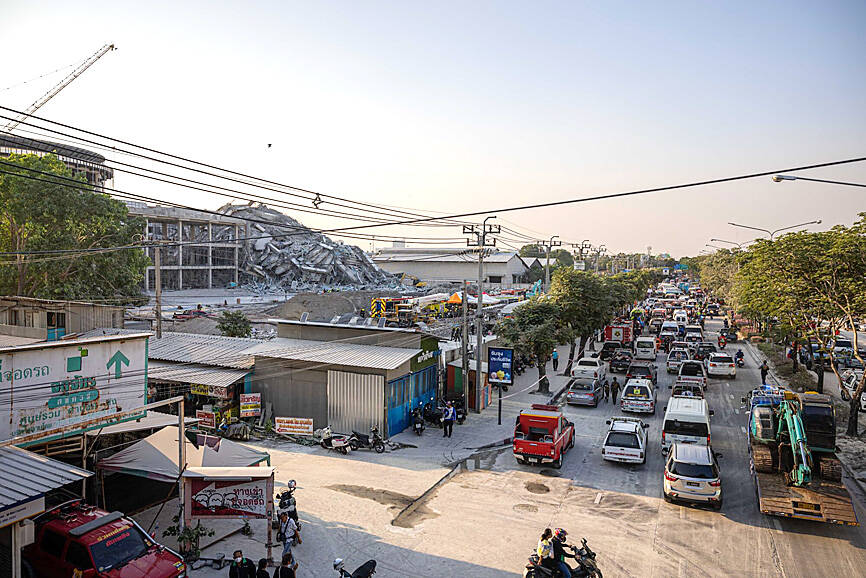
Photo: Bloomberg
Myanmar’s government said blood was in high demand in the hardest-hit areas. Images of buckled and cracked roads and damaged highways as well as the collapse of a bridge and dam raised further concerns about how rescuers would even reach some areas in a country already enduring a widespread humanitarian crisis.
Near Bangkok’s popular Chatuchak market, a 33-story building under construction, with a crane on top, crumpled into a cloud of dust, and onlookers could be seen screaming and running in a video posted on social media.
The sound of sirens echoed throughout central Bangkok and vehicles filled the streets, leaving some of the city’s already congested streets gridlocked. The elevated rapid transit system and subway were shut down.
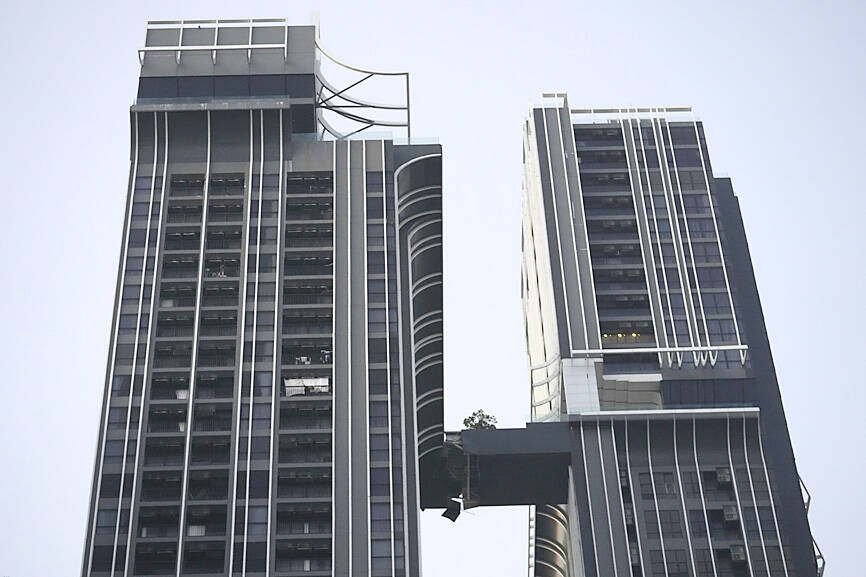
Photo: AP
While the area where the quake struck is prone to earthquakes, they are usually not so big and it is rare for them to be felt in the Thai capital.
In Bangkok, a construction worker was killed when rubble from the collapsing building site hit his truck and another was crushed by the falling debris, rescue worker Songwut Wangpon said.
Thai Minister of Defense Phumtham Wechayachai said three people were killed at the site and 90 were missing. He offered no more details about the ongoing rescue efforts, but first responders said that seven people had been rescued so far from the area.
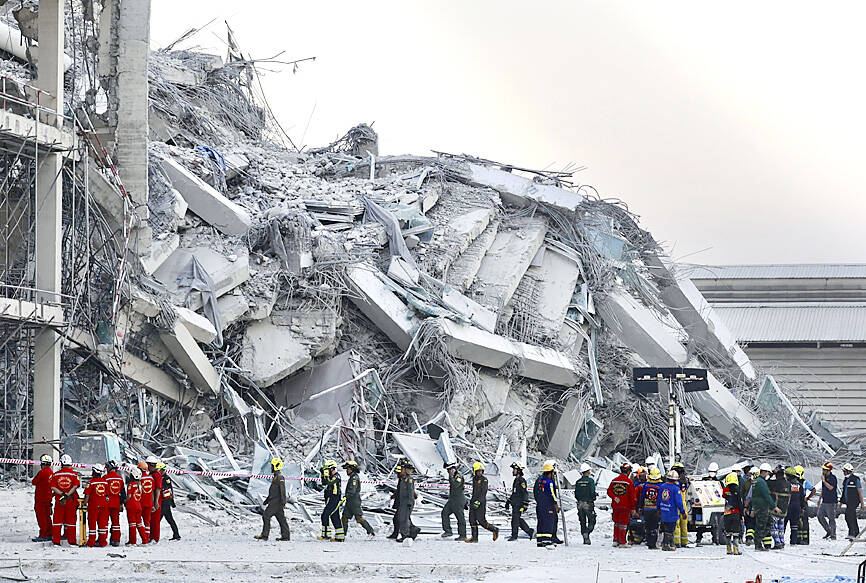
Photo: AP
In Taipei, President William Lai (賴清德) wrote on Facebook that he has asked the Ministry of Foreign Affairs to contact its offices in Myanmar and Thailand to look into the extent of the damage and see whether any Taiwanese would require assistance.
Lai said he is praying that there would be minimal damage in both countries, adding that if necessary, Taiwan would be willing to provide assistance.
Taiwanese nationals in Myanmar can call 209-257-257-575, and those in Thailand can call 081-666-4006 for assistance, Lai said.

Photo: AP
The Ministry of the Interior said that the National Fire Agency’s Special Search and Rescue team is on standby to travel to the countries to help out with the rescue effort.
The teams comprise of 120 search and rescue personnel, including five doctors, one veterinarian, seven nurses, six search and rescue dogs, and 15 tonnes of disaster relief equipment, it said.
Kaohsiung Mayor Chen Chi-mai (陳其邁) said the city is prepared to deploy its disaster response team, as Kaohsiung has six disaster search and rescue dogs that have received International Rescue Dog Organization (IRO) certification, and the city this month is the designated city for overseas rescue dog deployment.
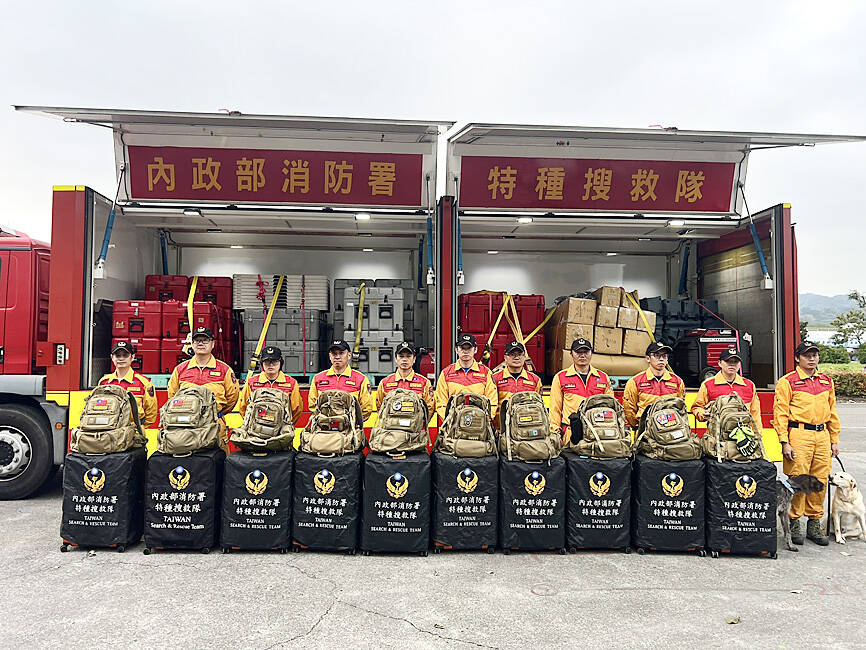
Photo: Screen grab from the National Fire Agency’s Facebook page
Meanwhile, the Shin Kong Wu Ho Su Memorial Hospital said it would donate US$100,000 to support disaster relief efforts in Myanmar.
Additional reporting by Su Yung-yao, Wang Jung-hsiang and Chiu Chih-jou
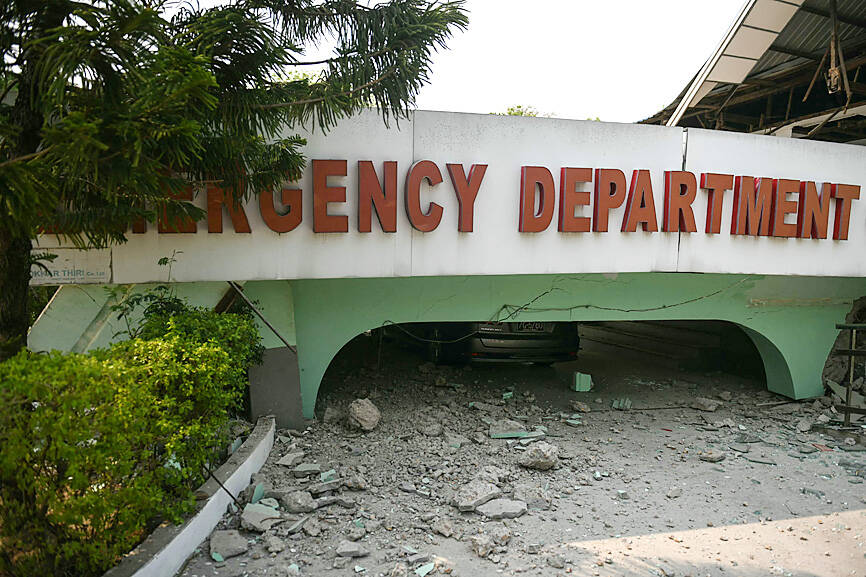
Photo: AP

Taiwan is projected to lose a working-age population of about 6.67 million people in two waves of retirement in the coming years, as the nation confronts accelerating demographic decline and a shortage of younger workers to take their place, the Ministry of the Interior said. Taiwan experienced its largest baby boom between 1958 and 1966, when the population grew by 3.78 million, followed by a second surge of 2.89 million between 1976 and 1982, ministry data showed. In 2023, the first of those baby boom generations — those born in the late 1950s and early 1960s — began to enter retirement, triggering
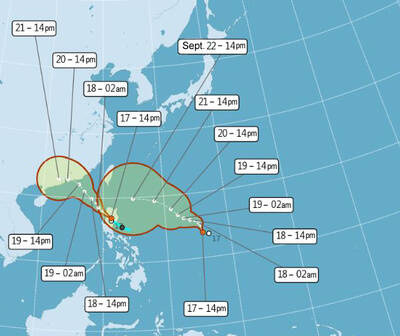
One of two tropical depressions that formed off Taiwan yesterday morning could turn into a moderate typhoon by the weekend, the Central Weather Administration (CWA) said yesterday. Tropical Depression No. 21 formed at 8am about 1,850km off the southeast coast, CWA forecaster Lee Meng-hsuan (李孟軒) said. The weather system is expected to move northwest as it builds momentum, possibly intensifying this weekend into a typhoon, which would be called Mitag, Lee said. The radius of the storm is expected to reach almost 200km, she said. It is forecast to approach the southeast of Taiwan on Monday next week and pass through the Bashi Channel

NO CHANGE: The TRA makes clear that the US does not consider the status of Taiwan to have been determined by WWII-era documents, a former AIT deputy director said The American Institute in Taiwan’s (AIT) comments that World War-II era documents do not determine Taiwan’s political status accurately conveyed the US’ stance, the US Department of State said. An AIT spokesperson on Saturday said that a Chinese official mischaracterized World War II-era documents as stating that Taiwan was ceded to the China. The remarks from the US’ de facto embassy in Taiwan drew criticism from the Ma Ying-jeou Foundation, whose director said the comments put Taiwan in danger. The Chinese-language United Daily News yesterday reported that a US State Department spokesperson confirmed the AIT’s position. They added that the US would continue to

The number of Chinese spouses applying for dependent residency as well as long-term residency in Taiwan has decreased, the Mainland Affairs Council said yesterday, adding that the reduction of Chinese spouses staying or living in Taiwan is only one facet reflecting the general decrease in the number of people willing to get married in Taiwan. The number of Chinese spouses applying for dependent residency last year was 7,123, down by 2,931, or 29.15 percent, from the previous year. The same census showed that the number of Chinese spouses applying for long-term residency and receiving approval last year stood at 2,973, down 1,520,